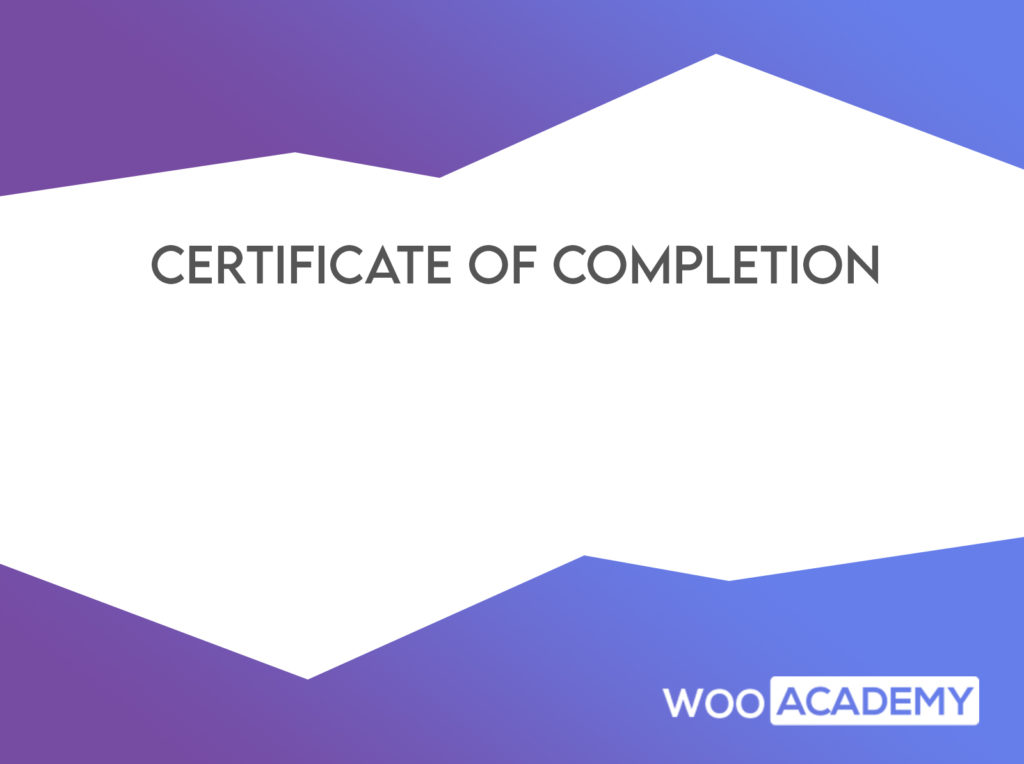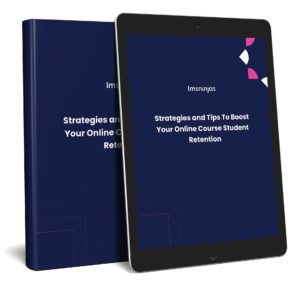It’s now easier than ever for anyone who wants to make money selling online courses. But the question is, how to sell your online course successfully?
By 2025, the online education sector might be valued at $325 billion. Once you have built up a steady clientele for your online courses, you can sit back and collect payments. Even better, anyone can start offering their own online courses to a willing audience. However, not everyone will succeed. With a market saturated with course offerings, you need to apply some smart course design and marketing strategies to stand out from the crowd.
How To Sell Your Online Course Successfully
This comprehensive tutorial will show you the ropes as you create, distribute, and monetize your online course.
1. Establish Your Audience Needs
Before you think about how to sell your online course, you need to create a course worth selling. While picking a course topic is essential, you won’t be able to start developing lessons and marketing your course until you identify your audience’s needs. Finding out who you’re writing for is the first step in developing consumer content.
You should take the time to do some research and figure out who your ideal student is before you start making your course.
Put Yourself In Your Audience’s Shoes
When you are a specialist in a certain topic, it’s easy to fall prey to cognitive bias and knowledge when you incorrectly think that the other person already knows what you know.
Consequently, this might lead to a situation where you communicate with someone but not with them. You may get back into the mindset of a newbie and make adjustments to your lesson by talking to potential students.
Understand Your Target Audience’s Needs
Users will be more likely to invest in your course if it solves a challenge they have been having, helps them learn what they have been having trouble finding elsewhere, or helps them learn it more rapidly or conveniently than other options.
To make this happen, you must have a thorough understanding of the challenges faced by your target audience and how best to address them during your course.
Establish What Your Audience Wants To Achieve With The Course
Students care most about the change that occurs due to taking your course. It could be settling into a regular exercise regimen, passing the real estate licensing exam, or creating a book proposal they’re proud to send to a publisher.
Discovering a customer’s ultimate goals requires talking to them; therefore, doing so.
Identify The Best Way To Sell
Create a customer profile to target them more effectively with your course offerings and promotional materials. From headings on the homepage to posts on social media marketing your course, what you learn about your customer’s language will guide your marketing efforts.
Don’t stop at guesswork and casual discussions when determining your ideal customer. Define your ideal consumer using the same research methods as if you were trying to find the perfect market for a new product.
2. Offer a Unique Value Proposition
It’s a good idea to look into any existing online learning course materials in your field to get a sense of what’s covered and how the material is presented. The point is to consider how to make your course stand out from the rest. Just what will you say about your subject matter that others haven’t? In what ways does your class differ from others in its field?
Coming up with a subject that is relevant to a specific genre would be challenging. You should remember that there could be numerous course makers that share your desire to develop and sell a profitable course but that your curriculum would be presented in an approach unlike any other. When designing an online course, it’s important to differentiate yourself from the competition so that students may have a positive learning experience.
You could also determine your search volume. The Google Keyword Planner is an option. Download a database containing over a million keyword recommendations categorized by several technical resources.
Look for relevant search terms, focusing on high-volume, low-difficulty options. You may also do keyword research with tools like Ahrefs. You may come across a lot of data about which keywords will help you get ranked on other websites.
Find a topic you’re interested in sharing with others and feel comfortable instructing people on; it’s not necessary that you have much expertise in this area, but your program will only be accepted if you can prove your competence in it. A lot more study is needed on this matter.
Remember that you are making an online program for your learners, so design it with that in mind. If you want more people to buy your online course, you need to establish yourself as an expert in the field. The topic you choose for your course should convince and interest its target students.
3. Leverage Keyword Research to Select a Course Title
Include the frequently searched-for terms linked to your course’s content in the title by using a tool like Google’s Keyword Planner to find them. It will help prospective students find your course when they conduct an online search related to the subject matter.
Each time a user enters a query, the search engine has to narrow the results down from thousands to just a few. The algorithms that power search engines are tasked with finding the most relevant results for each query. That’s why you must pick the right keywords for your content, as that’s how search engines will determine whether or not to include your site in their results for a given query.
When people use search engines to find what they’re looking for, it is crucial to have a high position in the first result page for relevant terms.
4. Create a Website For Your Course
The next step is to create a website to host your course materials. The various course management systems each have their own set of advantages. Content creation, marketing automation, online course management, and user community administration are all basic features of an eLearning site. For WordPress site owners, most of these things can be covered with the use of an LMS plugin. Additionally, the course should be hosted on a site that is fast and SEO-friendly to guarantee it is seen and positively received by a larger amount of people.
If you need help selecting a platform for your online course, make sure you consider these top open-source LMS platforms.
5. Use Your Blogs to Advertise The Course
You can use your blog solely to introduce potential students to your online course without issues. By providing a taste of the course’s value for free, you may establish credibility as an authority and encourage people to buy the full thing.
A blog can improve your search engine rankings for a specific term or topic—furthermore, blogs aid in attracting more visitors to your website. If you’re in the business of making online courses, you know how important it is to have high-quality blogs on your site. But make sure the blogs you write have a positive bearing on your course and are worth reading.
Reaching out to the target demographic through guest writing is also a terrific strategy. Among the most efficient forms of online advertising is guest blogging. If you wish to get the word out about your business and win over your ideal customers, you can start contributing to blogs that cover topics relating to the online course’s niche.
Doing thorough keyword research should always be kept in mind while discussing how to write quality blogs. There is a strong correlation between keyword usage and search engine rankings. When writing, put yourself in your reader’s shoes to determine what they would type into a search engine to find the information they need.
Keywords might help people find your online course. Always go for long-tail keywords that have a low volume but great difficulty.
If you run a virtual learning business, a blog is a great way to increase trust and transparency with your customers.
The more you demonstrate concern for your consumers by providing free content related to your courses, the more they will be interested in what you offer. They will let site users know if they need your online courses.
Also, you need to post articles or blog posts regularly. Thus, a schedule is essential. Since the blogs are long, consider posting two to three pieces a week. Are you prepared to take on that duty and commit effort and time? If yes, you’ll begin to see the results gradually.
Do you feel the need to spread the word about your blog somehow? Put it in your online communications, including emails, lectures, and blog posts. With optimized content writing, you can improve your blog’s visibility in search results, attract more readers, and generate more leads.
If you are interested in specialized content marketing services for online courses, make sure you reach out to our partners at Inflowlabs.
6. Add Testimonials and Reviews to Your Site
Your audience might believe what you say, but it’s much more effective if they hear it from others who have taken the course. Solicit comments and testimonials from clients who have successfully completed your program. This can convince potential clients of the worth of your online course. Your existing customers can greatly help you achieve this by sharing positive experiences on your webpage and elsewhere in your advertisements.
So that you can gather testimonials and reviews from satisfied customers and have them rate and comment on their experience with your course. See whether your satisfied customers would be prepared to offer a testimonial for your advertising.
Make sure to give clear instructions to customers regarding what to include in their testimonials.
Get more specific by posing questions about the benefits they derived from taking the online course. It’s more persuasive to provide concrete examples of how your course helped someone than to make sweeping statements about its value. A video testimonial is preferable to a written one if at all possible.
Naturally, asking for comments should not be limited to only testimonies. Take advantage of encouraging comments to learn what learners enjoy and how to improve less-than-stellar sections of the online course.
Giving your learners the greatest possible online learning experience requires listening to and acting on the comments of each new group of people who purchase your course.
7. Use Interactive Content
Making sure your material is interesting is necessary. What exactly does that mean, though? The first step is to ensure that the material is engaging. One way to accomplish this is to provide a personal anecdote about how you developed the methods and procedures you will teach.
This includes being direct and to the point and keeping the subject as plain and clear as possible so that learners may readily understand it.
Make it a game. Online courses incorporating interactive components like polls, quizzes, and forums tend to generate the highest quality content. This paves the way for more participation and a more meaningful understanding of the subject matter on the part of the learners.
Think of your students as players on a path from beginner to expert. This is why some people can’t stop playing video games once they start. Create your online course in a style that motivates students to advance.
Here is a list of successful strategies:
- Lay out a plan of action consisting of manageable steps toward a larger objective.
- Engage and inspire your audience through challenges. The simplest way to do this is through quizzes and tests. You can raise the stakes with course paths and quests.
- Implement activities that require your students’ active participation such as games, live sessions, quizzes, and puzzles.
- Make use of audiovisual media to engage the audience.
- Gamify your course and allow your students to earn prizes, badges, and points when they complete course materials or reach other milestones.
8. Offer a Free Module
To begin, you must accept that you will inevitably have to give to receive.
Before your target demographic is willing to part with their money for your material, they need evidence that it’s worth the price. The best way to do this is through a free trial or a sample.
Do not give away all of your knowledge or explanations in your free online content, but do your best to help others understand complex ideas.
For instance, if you’re selling a Yoga instruction course, you could make videos outlining the advantages of Yoga while still retaining the lessons for your buyers.
9. Do Webinars
Webinars are an affordable marketing tool to help you find new students for your program. Attendees of your 40-minute webinars are more likely to go on and buy your course. Find out what it takes to run a successful webinar.
10. Use a Podcast

To build credibility and show your experience in a casual, conversational setting, having an appearance on a podcast is a fantastic idea. Reach out to relevant podcasters and discuss how your knowledge will provide value to their shows and their audience.
Towards the finish of the conversation, several presenters will let you promote your product to their audience.
11. Email Marketing
Collecting emails from targeted clients is a strong approach to distributing announcements, information, and offers relevant to your course. Although a person might not purchase your courses initially when they visit your webpage, requesting the emails and establishing an email marketing plan may encourage them to pay later.
Emails can also help to market a “mini-course” that leads up to the main offering. Find out how to improve your company’s success by employing email marketing.
12. Leverage SEO
To increase the number of people enrolling in your course, it is important to optimize your webpage so that it appears near the top of search engine results. Use this search engine optimization checklist to improve your site’s search engine rankings.
Construct a plan for promoting your material. Creating free course material within your course niche may develop your authority, assist your program and content get revealed via search engine results, and also get free users to transition to paying subscribers. Find out how to attract more consumers with online content marketing.
Getting the word out about your program through advertising takes practice. Begin with a handful of marketing platforms to determine what works. When a certain marketing approach has successfully brought in new clients, that strategy should be expanded, while others should be abandoned.
13. Create an Affiliate Program

In an affiliate marketing program for an online course, you pay a commission to everyone who brings in new students. You will split the proceeds of each sale made.
In order to participate in an affiliate program, you must provide your partners with affiliate links or coupon codes. When customers click on your unique link and make a purchase, you receive a commission. The affiliate link will act as a sort of digital receipt for the transactions, making the whole process very easy to understand and manage.
Partners can advertise the university on their own sites, through social media, or simply by word of mouth to reach out to prospective students.
Find and affiliate marketing software
Selecting an affiliate marketing platform is a must to get started. Affiliate management is made easy with affiliate marketing software. You may make referral links and keep tabs on how many people clicked on them and how much money you made as a result.
Identify the commission package
A commission plan for your partners should be established after you have selected an affiliate marketing platform.
Incentives in the form of hard currency are the most desirable reward for partners. If you run an online shop, you could get it by giving away free stuff or giving customers store credit. Since your product is an online course, monetary incentives make more sense.
So you’ve settled on a percentage of sales for affiliates to earn. Once this is over, what will happen? The next step is to get affiliates to join the program.
14. Provide Different Pricing Plans
Now that you have a platform, you can begin planning how you will charge for and market your course. Taking this first step is crucial if you want to learn how to sell online courses.
Here’s where you can decide on a business and revenue model for your product or service.
One can select between three methods of making money:
- Subscription model: Money is made from subscribers by charging them a regular charge to utilize the service.
- Transactional model: A transactional model of monetization is one in which students pay a one-time charge to get their course materials.
- Hybrid model: The use of features from both models can be referred to as a “hybrid monetization” strategy and can be used to maximize revenue.
Subscription Monetization
By paying a monthly or annual fee, users get unrestricted access to all of their course materials.
This form of doing business has become popular because it benefits everyone involved: instructors and students. Furthermore, it works wonderfully for sites that require users to pay a monthly fee. Monetizing with subscriptions allows you to build a steady revenue stream over time.
Instead of constantly recruiting new prospects to sell their products, manufacturers of one-off courses may focus on keeping their current clients for longer through subscriptions.
Because of the flexibility of subscription models, you can provide the following:
- A lower price up front that is more manageable.
- Group of people who look out for one another.
- Invaluable help.
You may expect your pupils to remain subscribers, if you give them a sufficient incentive. If you want to provide many related courses of varying lengths, subscription-based monetization is a good option.
It’s much more pleasant to spend time cultivating your community and planning and creating quality course content than constantly hustling for new customers, so why not do both from the same place?
Transactional Monetization
Transactional monetization is where people pay a one-off fee to access your course content. This will typically be for access to a standalone course addressing one pain point. Transactional monetization is a more traditional approach and can result in higher initial earnings because you can charge a higher up-front fee for access.
It can be a perfect option if you only plan on creating and selling one or multiple courses that are much different in their teaching topics. But you have to ensure the number of purchases stays high enough to earn a steady profit – and that can be hard work.
Hybrid Monetization
Transactional monetization is when students pay a one-time cost to obtain access to their online course materials. In most cases, this will grant you access to a single course to alleviate a specific problem.
Transactional monetization is the conventional method, and it might yield greater early earnings because you can charge a bigger upfront fee for access.
It’s a great choice if you want to create and sell a single course or several courses that cover quite different themes. However, it can be challenging to maintain a high enough purchase volume to generate consistent revenue.
Hybrid monetization combines subscription and transactional methods to maximize revenue. It opens up new streams of revenue from viewers with varying interests and needs for the tutorials. Everyone can have the finest of both worlds because of the availability of multiple choices.
Your special tutorials, such as live seminars, Discussion forums, webinars, and expert interviews, can be offered for a one-time purchase in addition to your monthly subscription fee.
15. Certificates and Certificate Verification

A course certificate provides proof that the course was completed successfully. It’s a way to thank the learners for working hard and reaching their goals. It serves as proof that the course has been finished. Any site offering online courses is responsible for issuing completion certificates to successful students.
Certificates are precious for distance learners since they are visible evidence of proficiency. They are a great way for students to show off their accomplishments to prospective employers, scholarship committees, or even just as a conversation piece around the coffee table.
Students can get a certificate of completion for your online course or course module when they have successfully completed the requirements for that course or module.
Certificates can be presented in digital or physical form and may include not just confirmation of completion but also a token or any other award.
When an independent, authoritative body confirms the legitimacy of an online course, the resulting certificate is said to be “accredited.” Universities, corporate institutes, and other groups may accredit certificates.
Incorporating a credential system and verifying the completion of courses in an online environment might help students feel more invested in their studies
Boosts engagement
Lack of student participation is a major challenge for online course designers. It’s not a given that anyone purchasing your online course will finish it. If you want to encourage your pupils to follow through with the course and participate in it, consider rewarding them with a certificate of completion.
Increases the credibility of your online course
For the pupils, a certificate is a tangible representation of their efforts. Your course’s successful graduates will be eager to flaunt the new recognition they’ve earned.
Motivate your pupils to finish your online course by rewarding them with a certificate for their accomplishments
Boosts sales
Is it possible to use a certificate of completion as a promotional tool? Yes, why not! Students may enroll in your online course primarily to earn the accreditation they need to advance in their chosen field.
Social Proof
Customers can be impressed and encouraged to submit positive reviews on your site (perhaps while the recipient proudly displays their certificate) if you provide them with a certificate and other incentives for completing your course.
Enhances loyalty
You can keep in touch with former students of your online program by sending them a certificate of completion.
How To Sell Your Online Course
Making a course available online is like giving birth to a digital baby. When you embark on a career as a course creator, you’ll be able to put your passion and knowledge to work for you financially while also passing along what you’ve learned to others.
There are many strategies you can use to promote your online program; now it’s time to implement them. Keep in mind that trying out different types of advertising will take some time.
Commit to adopting a subset of them and gauging their efficacy before expanding to the others. Determine which are the most effective given your online course’s niche and audience, and focus on developing them further.




